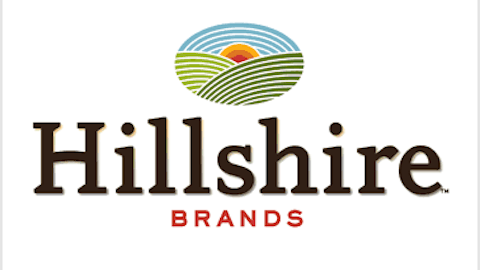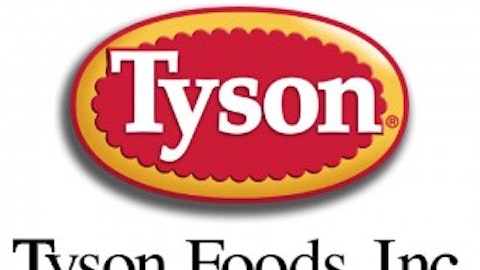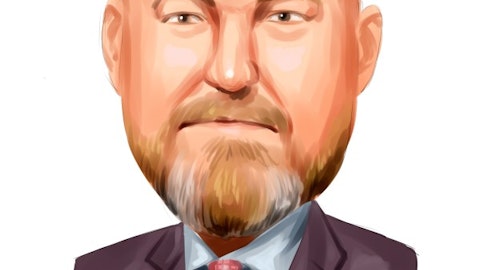Hits Keep Coming
Corn and soybean meal are the chief feed ingredients that Sanderson Farms uses for its chickens. In 4Q corn prices rose nearly 12%, while the price for soybean meal increased nearly 40%. Were it not for a 7.7% increase in poultry prices, Sanderson Farms might not have had a profitable year. If poultry prices remain firm and feed costs stay at bay, the company should experience greater profit growth in 2013. Sanderson Farms pays a quarterly dividend of $0.17 for a modest dividend yield of 1.30%. At the end of fiscal 2012, the company had $896.5 million in assets and $150 million in long-term debt. Shares of Sanderson Farms are trading at about 7% below 52-week high levels.
Volatility Persists
Shares of Smithfield Foods, Inc. (NYSE:SFD) — a company with a hybrid business that spans pork processing and packaged meats — are trading at approximately 4% below their 52-week high. It’s quite a recovery after shares dipped 26% below these levels in August 2012 just as the economy was reeling from 6% food inflation as a result of the historic drought.
Smithfield has an aggressive share buyback program in place, and over the past 18 months or so has repurchased more than 17% of the company’s equity. Smithfield reports its fiscal 3Q earnings results on March 7. In its most recent quarter, Smithfield reported 2Q adjusted EPS of $0.61 vs non-GAAP earnings of $0.76 per share in the same period a year ago. Quarterly sales fell 3% to $3.2 billion amid a soft pricing environment for meat.
Last quarter, the company’s results were impacted by charges associated with repurchasing and refinancing debt. The company is in the “final stages” of ridding its balance sheet of $1 billion in debt that has lingered since 2008, according to chief executive Larry Pope speaking on the fiscal 2Q earnings conference call.
Higher priced grains — including volatile corn prices — have pressured the live production segment of Smithfield’s business lately. The company does have a hedging program in place for corn and pays just over $7 per bushel, which helped to curb losses stemming from hog production in the second quarter. Smithfield has the benefit of a consumer packaging business to offset weakness in its commodities business. The company expects its hog production unit to return to profitability by the 4Q 2013.
It’s early in the year and weather and market conditions will change. Nonetheless, considering the improved outlook for grain prices and harvesting conditions, there could unrealized potential in shares of Tyson, Sanderson Farms, and Smithfield.

Attractive Comps
One thing that shareholders can look forward to is that the year-over-year comparisons for food stocks are likely to be attractive as quarterly earnings unfold in 2013 merely as a function of commodity prices. Still, the stocks have proven to be vulnerable to the weather, and while food companies have emerged from last year’s headwinds they still remain a volatile choice.
The article The Difference A Year Can Make originally appeared on Fool.com and is written by Gerelyn Terzo.
Copyright © 1995 – 2013 The Motley Fool, LLC. All rights reserved. The Motley Fool has a disclosure policy.



